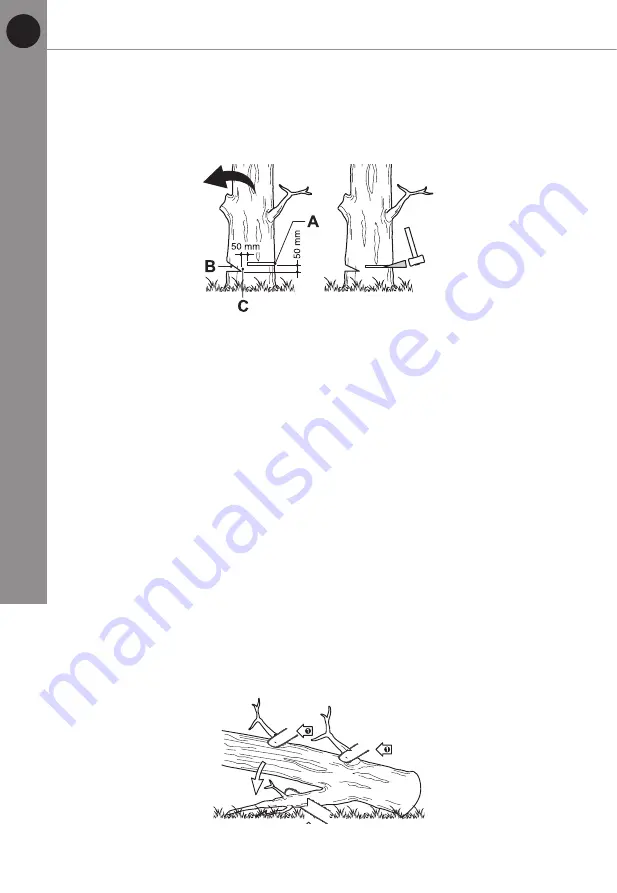
38
In
more
detail...
EN
TTI932CHN
Notching undercut
Make the notch (Fig. 29, B) 1/3 the diameter of the tree, perpendicular to the
direction of falls (Fig. 29). Make the lower horizontal notching cut first. This will
help to avoid pinching either the saw chain or the guide bar when the second
notch is being made.
Fig. 29
Felling back cut
1.
Make the felling back cut (Fig. 29, A) at least 50 mm higher than the
horizontal notching cut (Fig. 29). Keep the felling back cut parallel to the
horizontal notching cut. Make the felling back cut so enough wood is left
to act as a hinge. The hinge wood (Fig. 29, C) keeps the tree from twisting
and falling in the wrong direction. Do not cut through the hinge.
2. As the felling gets close to the hinge, the tree should begin to fall. If there is
any chance that the tree may not fall in desired direction or it may rock back
and bind the saw chain, stop cutting before the felling back cut is complete
and use wedges of wood, plastic or aluminium to open the cut and drop the
tree along the desired line of fall.
3.
When the tree begins to fall remove the product from the cut, stop the
motor, put the product down, and then use the retreat path planned. Be
alert for overhead limbs falling and watch your footing.
Limbing and pruning
Limbing is removing the branches from a fallen tree. When limbing leave larger
lower limbs to support the log off the ground. Remove the small limbs in one
cut (Fig. 30). Branches under tension should be cut from the bottom up to avoid
binding the product.
Fig. 30
Operation
Summary of Contents for TTI932CHN
Page 60: ......












































